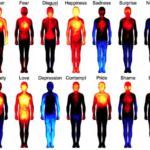Today we borrow freely from a piece published by the University of Minnesota, Center for Spirituality and Healing. After all, why should we try to reinvent the wheel? When it comes to understanding the mind-body connection, it’s hard to improve on such a well-done description?
What exactly is meant by the word “mind?”
It’s important to note that “mind” is not synonymous with brain. Instead, in our definition, the mind consists of mental states such as thoughts, emotions, beliefs, attitudes, and images. The brain is the hardware that allows us to experience these mental states.
Mental states can be fully conscious or unconscious. We can have emotional reactions to situations without being aware of why we are reacting. Each mental state has a physiology associated with it—a positive or negative effect felt in the physical body. For example, the mental state of anxiety causes you to produce stress hormones.
Many mind-body therapies focus on becoming more conscious of mental states and using this increased awareness to guide our mental states in a better, less destructive direction.
What is the history of mind-body connection?
Awareness of the mind-body connection is by no means new. Until approximately 300 years ago, virtually every system of medicine throughout the world treated the mind and body as a whole. But during the 17th century, the Western world started to see the mind and body as two distinct entities. In this view, the body was kind of like a machine, complete with replaceable, independent parts, with no connection whatsoever to the mind.
This Western viewpoint had definite benefits, acting as the foundation for advances in surgery, trauma care, pharmaceuticals, and other areas of allopathic medicine. However, it also greatly reduced scientific inquiry into humans’ emotional and spiritual life, and downplayed their innate ability to heal.
In the 20th century, this view gradually started to change. Researchers began to study the mind-body connection and scientifically demonstrate complex links between the body and mind. Integrative psychiatrist James Lake, MD, of Stanford University, writes that “extensive research has confirmed the medical and mental benefits of meditation, mindfulness training, yoga, and other mind-body practices.”
What are body-mind therapies?
Related to mind-body therapies are therapies that use the body to affect the mind, such as yoga, tai chi, qigong, and some types of dance (these are sometimes called body-mind therapies). Ultimately mind-body and body-mind therapies are interrelated: the body affects the mind, which in turn impacts the body (and the mind.)
- Patient support groups
- Cognitive-behavioral therapy
- Meditation
- Prayer
- Creative arts therapies (art, music, or dance)
- Yoga
- Biofeedback
- Tai chi
- Qigong
- Relaxation
- Hypnosis
- Guided imagery
Added to this list is the Orthopedic Manual Therapy and Christy’s Body Whisperer Technique, which combines the science of Craniosacral Therapy (nervous system) and Visceral Mobilization (organ movement), used at Christy Sanger Therapies.
These are a holistic combination of techniques that align joints, balances the body, creates efficiency and fluidity of motion of the organs, and relaxes the nervous system. The manual techniques are combined with lifestyle changes that allow the body to maintain the changes made on the table.



